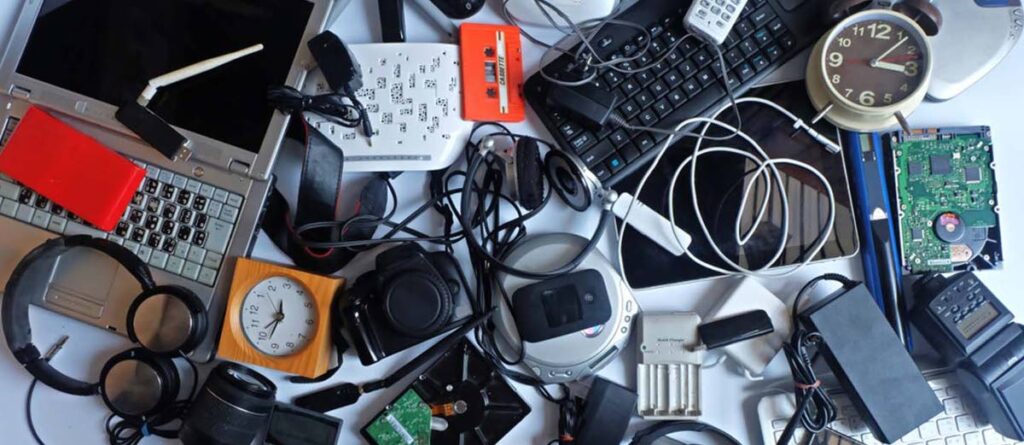Trinidad and Tobago produces tonnes of e-waste monthly

E-waste is becoming the largest stream of waste, globally and in Trinidad and Tobago.
Piranha International Ltd (PIL) records between eight and ten tonnes per month and usually collect from organisations or from those who drop off devices at any of PIL's locations. Recyclage E-waste Management Ltd in Arima reported three tonnes of e-waste monthly.
Managing director Sheldon La Motte told Business Day on Tuesday that most of the e-waste comes from residential clients.
"Approximately five to ten per cent of that is waste collected from residential clients, but this is still significant as more of the residents are made aware of our services as well as the importance of properly disposing waste of this nature."
PIL owner, Nadine Lakatoo, said although most of its e-waste comes from organisations, the company also sees a number of people walking in to recycle their outdated devices.
"We mainly allow walk-ins at the Bahadoor Street, California, Couva office, but when we do planned pick-ups from other clients, we try to accommodate home users who may fall along the different routes," Lakatoo said.
Both she and La Motte explained that if they are not recycled, out-dated devices which contain zinc, mercury, fire retardants and other harmful materials end up in landfills to be burned. Over time, those devices secrete hazardous material which goes into the soil and eventually ends up in water supplies, food sources and can also pollute the air.
As a result of pollution, people and animals can develop ailments like lead poisoning, cancer and may experience birth defects.
Officials from the Solid Waste Management Company (SWMCOL) told Business Day that its facilities are not equipped to handle e-waste, but it works closely with e-waste disposal companies to ensure the devices don't end up in the landfills.
This is where the Recyclage E-waste Management Ltd and PIL play their roles.
Lakatoo said the devices collected are tested, de-manufactured and sorted for recycling. La Motte added that before handing in their devices for recycling, people must clear or delete all personal information from them. She said that where possible, her workers take necessary steps to ensure data is removed and destroyed.
"The hazardous components are shipped to different facilities in Europe and Asia that specialise in the safe management of those components," she said.
La Motte sends recycled devices to a recycling plant in Hong Kong where they are either refurbished or parts are removed to be reused.
Along with the Recyclage E-waste Management Ltd and PIL, another entity known as the Basel Convention Regional Centre for Training and Technology Transfer for the Caribbean (BCRC) are encouraging people to seek guidance in dumping e-waste.
The BCRC launched an initiative called Helping Electronics Live Longer (Hello) in May to collect used phones for recycling. When the initiative ends in January, data will be collected to note the amount of e-waste collected.
People can drop off their items at the BCRC's collection bins at its headquarters, 8 Alexandra Street, Port of Spain.
What is e-waste
E-waste is electronic products that are unwanted, not working, and nearing or at the end of their “useful life” that has been or will be discarded. E-waste is particularly dangerous due to toxic chemicals that naturally leach from the metals inside when buried.
Common e-waste items include:
microwaves
home entertainment devices
electric cookers
heaters
fans
cell phones
smartphones
desktop computers/monitors
laptops
circuit boards
hard drives
DVDs
stereos
televisions
video game systems
fax machines
copiers
printers
remote controls
electrical cords
lamps
smart lights
smart watches
copiers/printers
phone and PBX systems
audio and video equipment


Comments
"Trinidad and Tobago produces tonnes of e-waste monthly"